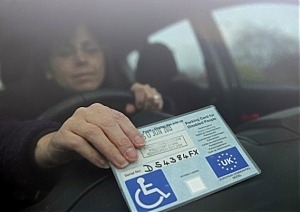Personal Independence Payment (PIP) is a benefit designed to help individuals with long-term health conditions or disabilities manage extra costs associated with their condition.
A common question for those receiving PIP is whether they are eligible for a Blue Badge, which provides essential parking benefits. This article will explore the criteria for obtaining a Blue Badge through PIP and guide you through the application process.
Understanding Personal Independence Payment (PIP)
PIP is a benefit for individuals who need help with daily living activities or have mobility issues due to a long-term health condition or disability. It is divided into two components: the daily living component and the mobility component. Eligibility for a Blue Badge is primarily linked to the mobility component of PIP.
Blue Badge Eligibility Criteria
To qualify for a Blue Badge through PIP, you must meet specific criteria related to the mobility component of your PIP award. Specifically, you must:
- Receive eight points or more under the ‘moving around’ activity of the mobility component of PIP.
- Provide a copy of your statement of entitlement detailing the points awarded.
If you meet these criteria, you are automatically eligible for a Blue Badge. This means that the assessment process for a Blue Badge will consider your PIP award as sufficient evidence of your mobility issues.
Applying for a Blue Badge with PIP
The application process for a Blue Badge involves several steps, whether you apply online or through a paper application form. Here’s how to proceed:
- Gather Necessary Documents: Ensure you have your PIP statement of entitlement, proof of identity, proof of address, and a recent digital photo ready.
- Complete the Application Form: Fill out the Blue Badge application form, providing detailed information about your condition and your PIP award.
- Submit Supporting Documents: Along with the application form, submit copies of your PIP statement and other required documents.
- Pay the Application Fee: There is a fee for applying for a Blue Badge, which varies by local council but is typically up to £10.
- Submit Your Application: Submit your completed application and supporting documents either online or by mail to your local council.
For detailed guidance on the application process, you can visit our article on How to Apply for a Blue Badge Online.
What to Expect After Applying
Once you submit your application, your local council will process it. Here are some key points to keep in mind:
- Processing Time: Applications typically take up to 12 weeks to process, although this can vary depending on your local council and current demand.
- Mobility Assessment: In some cases, the council may request a mobility assessment to further evaluate your eligibility. This involves a meeting with a healthcare professional who will assess your mobility issues.
- Decision Notification: You will receive a notification from your local council regarding the outcome of your application. If successful, you will receive your Blue Badge in the mail.
What If Your Application Is Unsuccessful?
If your application is not successful, you have the right to request a review. The review process involves re-evaluating your application and the provided evidence. Detailed information about how to request a review will be included in the letter from your council.
Renewing Your Blue Badge
A Blue Badge is typically valid for three years. To ensure continued access to the benefits, you need to reapply before your badge expires. It is recommended to start the renewal process at least eight weeks before the expiry date. For more information, visit our guide on What Are the New Rules for a Blue Badge?.
For more detailed information on the Blue Badge application process and eligibility criteria, visit the following articles on our website:
Common Questions and Misconceptions
1. Can I get a Blue Badge if I don’t meet the PIP criteria?
Yes, even if you do not meet the PIP criteria, you may still be eligible for a Blue Badge based on other factors such as severe difficulty walking or needing assistance. Each application is assessed on an individual basis.
2. Do I need to provide additional evidence if I already receive PIP?
If you automatically qualify for a Blue Badge through PIP, your PIP statement should be sufficient evidence. However, providing additional supporting documents can strengthen your application.
3. How do I know if I receive enough points under PIP to qualify for a Blue Badge?
Your PIP statement of entitlement will detail the points awarded under the ‘moving around’ activity. If you receive eight points or more, you qualify for a Blue Badge.
Obtaining a Blue Badge through PIP is a straightforward process if you meet the eligibility criteria. By ensuring you have the necessary documentation and understanding the application process, you can benefit from the mobility support provided by the Blue Badge scheme. For more detailed guidance on applying for a Blue Badge and understanding the eligibility criteria, visit our additional resources linked above.
Staying informed and organized will help you successfully navigate the application process and access the benefits designed to make your daily activities more manageable and less stressful.

